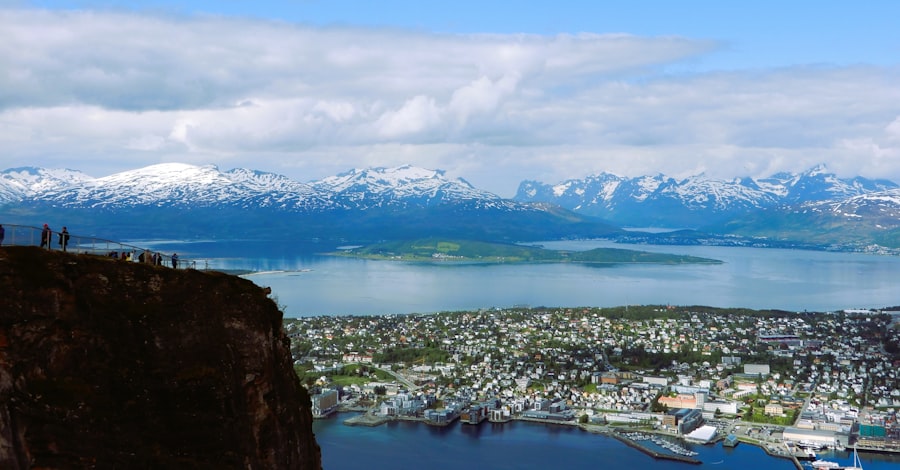Parental leave in Norway is a cornerstone of the country’s commitment to family welfare and gender equality. The Norwegian government has established a robust framework that not only supports new parents but also encourages shared responsibilities between mothers and fathers. This progressive approach is reflective of Norway’s broader social policies, which aim to create a balanced work-life dynamic.
As a result, the nation has become a model for parental leave systems worldwide, attracting attention from various countries looking to reform their own policies. The significance of parental leave extends beyond mere time off work; it embodies the values of nurturing and bonding that are essential for both child development and family cohesion. In Norway, the emphasis on parental leave is not just about allowing parents to take time off; it is about fostering an environment where both parents can actively participate in the early stages of their child’s life.
This commitment to family well-being is evident in the comprehensive benefits and support systems available to parents, making Norway a leader in this vital area. Book Your 1-Hour Relocation Strategy Session
Summary
- Norway offers generous parental leave policies, allowing both mothers and fathers to take time off work to care for their children.
- Maternity leave in Norway is 15 weeks at full pay, while paternity leave is 15 weeks at 100% pay or 19 weeks at 80% pay.
- To be eligible for parental leave benefits in Norway, individuals must have been employed for at least six of the ten months before the due date or the start of the adoption process.
- Parental leave in Norway can be taken for up to 49 weeks at 100% pay or 59 weeks at 80% pay, and can be shared between parents.
- Parents in Norway receive benefits and compensation during parental leave, including a parental leave benefit from the Norwegian Labour and Welfare Administration.
Understanding the Maternity and Paternity Leave Policies
Norway’s maternity and paternity leave policies are designed to provide equitable opportunities for both parents to engage in childcare. Maternity leave typically begins four weeks before the expected due date, allowing mothers to prepare for childbirth while ensuring they have adequate time to recover post-delivery. The standard duration of maternity leave is 46 weeks at full pay or 56 weeks at a reduced rate, giving mothers the flexibility to choose what best suits their family’s needs.
Paternity leave, on the other hand, is equally significant in promoting shared parenting responsibilities. Fathers are entitled to a minimum of 15 weeks of paid leave, which can be taken in conjunction with the mother’s leave or separately. This policy not only encourages fathers to take an active role in early childcare but also helps to challenge traditional gender roles within the family structure.
The Norwegian government has made it clear that both parents should have the opportunity to bond with their child during these formative months, thereby fostering a more equitable distribution of parenting duties.
Eligibility Criteria for Parental Leave Benefits

To qualify for parental leave benefits in Norway, certain eligibility criteria must be met. Primarily, parents must have been employed for a minimum period prior to taking leave, which typically involves working for at least six of the ten months leading up to the birth or adoption of a child. This requirement ensures that benefits are provided to those who have contributed to the social security system, thereby maintaining fairness within the framework.
Additionally, self-employed individuals and those on temporary contracts may also be eligible for parental leave benefits, provided they meet specific conditions set by the Norwegian Labour and Welfare Administration (NAV). This inclusivity reflects Norway’s commitment to ensuring that all families, regardless of their employment status, have access to essential support during one of life’s most significant transitions. By establishing clear eligibility criteria, Norway ensures that its parental leave system remains accessible and equitable for all parents.
Duration and Flexibility of Parental Leave
One of the standout features of Norway’s parental leave system is its duration and flexibility. Parents can choose between different leave options that best suit their family’s circumstances. The standard parental leave can be taken as a continuous block or divided into shorter periods, allowing parents to tailor their leave according to their needs.
This flexibility is particularly beneficial for families who may wish to stagger their time off or share responsibilities more evenly. Moreover, the option to extend parental leave under certain conditions adds another layer of adaptability. For instance, parents can opt for part-time work arrangements during their leave period, enabling them to gradually transition back into the workforce while still being present for their child.
This approach not only supports parents in managing their professional commitments but also reinforces the importance of maintaining a strong family bond during the early years of a child’s life.
Benefits and Compensation for Parental Leave
The benefits and compensation associated with parental leave in Norway are among the most generous in the world. Parents can receive up to 100% of their salary during their leave period, depending on the chosen duration and payment scheme. This financial support alleviates some of the stress associated with taking time off work, allowing parents to focus on their new responsibilities without worrying about their financial stability.
In addition to salary compensation, parents may also receive supplementary benefits such as child allowances and support for childcare costs once they return to work. These additional resources further enhance the overall support system for families in Norway, ensuring that they are well-equipped to manage both parenting and professional obligations. The comprehensive nature of these benefits underscores Norway’s commitment to fostering a family-friendly environment that prioritises the well-being of both parents and children.
How to Apply for Parental Leave in Norway

Applying for parental leave in Norway involves a straightforward process designed to ensure that parents can access their entitlements with minimal hassle. The first step is to notify the employer about the intention to take parental leave, ideally at least four weeks before the planned start date. This advance notice allows employers to make necessary arrangements and ensures that both parties are aligned on expectations.
Once the employer has been informed, parents must submit an application for parental leave benefits through NAV. This application typically requires documentation such as proof of employment and details regarding the expected due date or adoption date. NAV provides clear guidelines and support throughout this process, making it easier for parents to navigate the necessary paperwork.
By streamlining the application process, Norway ensures that parents can focus on what truly matters: welcoming their new child into the world.
Employer Responsibilities and Support for Parental Leave
Employers in Norway play a crucial role in supporting employees during their parental leave. They are required by law to provide information about parental leave policies and ensure that employees are aware of their rights and entitlements. This proactive approach fosters an open dialogue between employers and employees, creating an environment where parents feel supported in their decision to take time off.
Furthermore, employers are encouraged to develop family-friendly workplace policies that facilitate a smooth transition back into work after parental leave. This may include flexible working arrangements, part-time options, or even phased returns to work. By prioritising employee well-being and accommodating their needs during this significant life event, employers contribute positively to employee morale and retention rates.
Rights and Protections for Employees on Parental Leave
Norwegian law provides robust protections for employees on parental leave, ensuring that they are not disadvantaged during this critical period. Employees are entitled to return to their previous position or an equivalent role upon completion of their leave, safeguarding their job security. This legal protection is vital in promoting confidence among parents when taking time off work.
Additionally, employees cannot be dismissed or subjected to unfavourable treatment due to their decision to take parental leave. This protection extends not only during the leave period but also in the months leading up to it and following their return. By enshrining these rights into law, Norway reinforces its commitment to supporting families and promoting gender equality within the workplace.
Returning to Work After Parental Leave
The transition back to work after parental leave can be a challenging experience for many parents. However, Norway’s supportive policies aim to ease this process significantly. Employers are encouraged to facilitate a smooth reintegration by offering flexible working arrangements or gradual returns to full-time hours.
Such measures help parents adjust back into their professional roles while still managing their family responsibilities. Moreover, many organisations in Norway actively promote a culture that values work-life balance, making it easier for returning parents to navigate their dual roles as employees and caregivers. This supportive environment not only benefits individual families but also contributes positively to overall workplace morale and productivity.
Additional Support and Resources for Parents in Norway
In addition to parental leave benefits, Norway offers a wealth of resources designed to support families throughout their parenting journey. Local municipalities provide various services such as parenting classes, support groups, and access to childcare facilities. These resources empower parents with knowledge and skills that enhance their parenting experience while fostering community connections.
Furthermore, organisations such as the Norwegian Family Association offer valuable information and advocacy on issues related to family welfare and child development. By providing access to these resources, Norway ensures that parents have the tools they need to thrive in their roles while promoting a strong sense of community among families.
Comparing Parental Leave Policies in Norway with Other Countries
When comparing Norway’s parental leave policies with those of other countries, it becomes evident that Norway stands out as a leader in this area. Many nations offer significantly shorter periods of paid leave or less generous compensation rates, which can place undue financial strain on families during critical early months of childcare. In contrast, Norway’s comprehensive approach prioritises both parental involvement and financial security.
Countries such as the United States have notably less structured parental leave policies, often leaving families without guaranteed paid time off following childbirth or adoption. This disparity highlights the importance of Norway’s commitment to creating an inclusive environment where both mothers and fathers can participate equally in childcare responsibilities without sacrificing their professional aspirations. In conclusion, navigating parental leave in Norway is an experience marked by support, flexibility, and comprehensive benefits designed with families in mind.
For those considering relocation or seeking guidance on how best to utilise these policies, engaging with experts can be invaluable. The Norway Relocation Group offers a One-Hour Strategy Session tailored specifically for individuals looking to understand how these policies apply within their unique circumstances. This session provides an opportunity for prospective parents or those planning a move to gain insights into navigating parental leave effectively while ensuring they make informed decisions about their future in Norway.
By leveraging such resources, families can embark on this new chapter with confidence and clarity.

